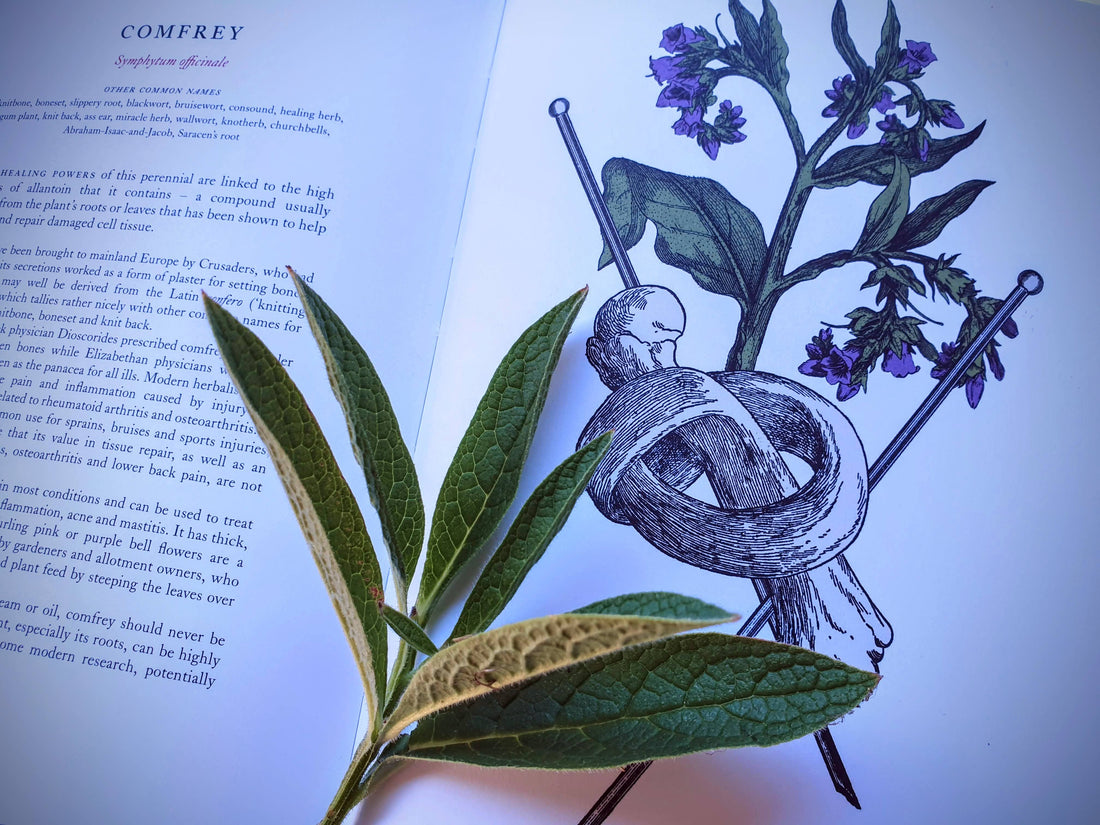Comfrey is another herb we grow on the farm.
It is very good for building compost and soil heath as its big taproot system mines the soil for minerals and nutrients. It has also been used in natural medicine for thousands of years for treating sprains, burns, and bruises.
The Illustration above is from the "Physick Garden" Ancient Cures for Modern Maladies book showing comfrey as it's common name knitbone or boneset. The book describes how the Ancient Greek physician Dioscorides prescribed Comfrey as a healer for broken bones. We are growing over 20 of the 85 herbs listed in this book and learning which to plant next.
This 2024 clinical review found that "key compounds like allantoin, rosmarinic acid, globoidnans A and B, rabdosiin, and comfreyn A, have been identified as significant contributors to the anti-inflammatory and wound-healing effects of Symphytum-derived preparations."

"Symphytum species, well-known for their wound-healing, astringent, antihaemorrhagic, skin-regenerating, and demulcent properties, have historical use in conditions such as ulcers, wounds, bone fractures, and rheumatic complaints (Barnes et al. 2007; Evans 2009)."
Best for sporadic use
It is not a herb that is safe for continuous use and should only be used for a maximum of 5 consecutive days to relieve joint pain or sprains.
You should not use comfrey on an open wound or broken skin.
Children under the age of 18, pregnant or breastfeeding women should not use it at all.
Comfrey should never be taken internally as it is toxic.
It contains a substance called pyrrolizidine alkaloids (PAs) which can cause liver toxicity.
As some will be absorbed through the skin people with liver disease or a history of alcohol abuse should should not even use it on the skin.
https://www.healthline.com/health/what-is-comfrey
https://draxe.com/nutrition/comfrey/
https://link.springer.com/article/10.1007/s11101-024-09977-1
https://www.mdpi.com/1420-3049/24/12/2272

